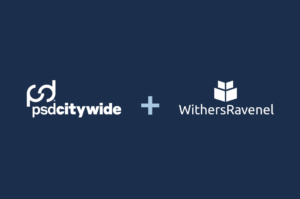When embarking on a new journey, it is prudent that you set your sights on a clear destination in order to identify and navigate the best possible route. The same can be said for embarking on or continuing an asset management journey. While the current level of focus on asset management as a discipline has gained momentum over the past two decades, organizations have managed the lifecycle of physical assets for hundreds of years. What makes the current focus different? That there is a clear emphasis on ensuring that assets are managed in the best possible way to ensure target levels of service are being met. In order to do this, it is important for us to chart the best course, and that is where a strategic asset management policy comes in.
The asset management policy is a strategic document that outlines the expectations, direction, and level of asset management practice within the organization as directed by top management (ISO/IEC, 2014; IPWEA, 2015). It sets out the processes to achieve the organizational and asset management objectives and can provide a mechanism to document the strategic asset management-related needs and wants of top-level stakeholders in the organization.
I. Importance and Value
A strategic asset management policy can serve as a valuable point of reference as an organization progresses on its asset management journey. It sets out the organization’s commitments and expectations for decisions, activities, and behaviour concerning asset management, and should be aligned to and demonstrate support for the organizational objectives. A great asset management policy clearly indicates the intent of the organization and is available to all staff. It is a single location to store how the organizational objectives will be accomplished through asset management practices and can set out the roles and responsibilities related to asset management in various levels of the organization.
II. Relationship to Other Strategic Asset Management Documents
The discipline of asset management is a combination of management, financial, economic, engineering, operations, and other practices applied to assets with the objective of providing the required level of service and minimizing risks in the most cost-effective manner. Some of the key principles of strategic asset management are:
- Providing defined levels of service and monitoring performance;
- Managing the impact of growth through demand management and infrastructure investment;
- Taking a full lifecycle approach to developing cost-effective management strategies for the long-term to meet that defined level of service;
- Identifying, assessing, and appropriately controlling risks; and,
- Having a long-term financial plan which identifies expenditures and how they will be funded.
An asset management system is defined as the people, processes, tools, and other resources involved in the delivery of asset management. The asset management system starts at the strategic level by establishing the asset management policy and objectives, and then applies resources to delivering asset management at an operational level. Some of the key documents in the asset management system include, but are not limited to the following:
- Asset management policy (that supports the organizational strategic plans);
- Strategic asset management plan, which evaluates the strategic ability of the organization to accomplish the requirements of the asset management policy;
- The corporate asset management plan, which provides an organization-wide view of the state of the assets, levels of service, lifecycle management strategies, and financial strategies; and,
- Portfolio asset management plans which are of greater detail in specific asset portfolios and are tied closely to operational-level work plans.
It should be noted that the appropriate level of documentation, and number and type of asset management plans is dependent on what is most valuable to the organization. The benefits and costs should be weighed when determining which documents should be developed.
III. Industry Guidance
The development and format of the asset management policy can vary depending on the organizational culture, complexity, and requirements. In some cases, the asset management policy can be a single page document, which clearly articulates how the organization will meet its organizational objectives. In others, it can take the form of a formal corporate policy with upwards of ten pages. Either way, it is useful to develop concise communication mechanisms such as posters to enable the key components of the policy to be easily displayed and communicated. The type of policy should be determined according to the organizational needs.
The International Standard for Asset Management, ISO 55002:2014(E) (ISO/IEC, 2014, p. 7) provides the following definition for asset management policies:
The asset management policy is a short statement that sets out the principles by which the organization intends to apply asset management to achieve its organizational objectives. The asset management policy should be authorized by top management and thereby demonstrate commitment to asset management.
While it is relatively straightforward for an organization to dedicate resources and develop their policy document, the challenge is engraining the key principles of the policy within the culture of the organization. This can be only accomplished over time. Within both the IIMM (IPWEA, 2015) and ISO55000, it is defined that a good asset management policy has:
- Clear guiding principles of how asset management will be implemented to achieve the organizational objectives;
- Provides organizational commitment to asset management, including top management support;
- Be consistent with strategic documents in the organization, such as strategic plans and administrative plans;
- Includes commitments to meet legislative and regulatory standards;
- Includes commitment to continual improvement; and,
- Includes update and review frequencies (typically between 2 to 5 years).
IV. Canadian Government and Funding Agencies
In recent years, government agencies at the provincial and federal levels have made significant strides in increasing the priority of asset management in public organizations in Canada. Since 2012, having endorsed asset management plans in place has been a component of eligibility for grant funding in some provinces, and the scope of requirements is broadening beyond the typical critical infrastructure (such as roads, bridges, water, wastewater, and storm water).
A key component of asset management is a focus on continual improvement and making the best possible decisions regarding assets. Similarly, the requirements for asset management are also continually improving and new requirements are emerging in some provinces to regulate or promote asset management in the broader public sector. One recent example is the creation of Ontario Regulation 588/17: Asset Management Planning for Municipal Infrastructure which requires all municipalities in the province to have a strategic asset management policy in place by July 1st, 2019.
Although meeting regulatory and legislative requirements is a necessity, the value and benefits of asset management extend far beyond meeting them. Asset management specifically focuses on making the best possible decisions regarding the building, operating, maintaining, renewing, replacing, and disposing of infrastructure assets. Effective asset management has been demonstrated to support strong governance and accountability, sustainable decision-making, enhanced customer service, effective risk management, and improved financial efficiency. Through committing to a culture of asset management continual improvement through the asset management policy, organizations are taking necessary steps to ensure that budgets are allocated wisely, while maintaining and communicating service levels.
V. How to Develop an Asset Management Policy
There is no wrong or right way to develop an asset management policy; however, one fundamental principle should be upheld for it to add value to the organization. The policy should be endorsed and supported by top management in the organization. Some steps and considerations that could typically be followed to develop an asset management policy include:
- Understand the organizational objectives: The assets an organization possesses are in place fundamentally to achieve the objectives of the organization. Therefore, these objectives should be the initial focus of the policy and can give a good understanding of the objectives and requirements of asset management. Typically, organizational objectives can be found in organizational strategic plans, administrative plans, or other strategic documents. In the absence of available documentation, the organizational objectives could be developed through a facilitated workshop with top management in the organization.
- Identify the vision and mission for the asset management program: What are you trying to accomplish? This is the question that should be answered. The vision describes how the program will look in the future and what the aim is for the asset management program. The mission describes why the asset management program is in existence and focusses on what is being done today. Many organizations have defined and published their asset management mission statements, which can provide valuable points of reference. Once a draft is developed, it can be reviewed in a facilitated workshop setting with top management in the organization.
- Identify the key asset management objectives: These are more specific and must be able to be related to specific initiatives. For example, you could state that you aim to effectively manage risks, which then could be related to a risk management initiative. It is good practice to keep the list of key asset management objectives to less than ten.
- Identify any guiding principles or values: The guiding principles are specific statements that will guide the asset management program. It is useful to link these principles to the organizational objectives. This should also include reference and commitment to meet any applicable regulations and legislation.
- Document the draft policy: Based upon the findings of the above research, a draft policy document can be developed for review.
- Form and circulate the draft to a peer review team: A peer review team of individuals who will be impacted by the policy should be developed. In some cases, where an asset management steering committee has been formed, they can serve as the review team. The review team should evaluate how holistic the policy is with respect to the organizational objectives and highlight specific concerns or omissions.
- Incorporate changes and seek approval from top management and/or Council: Once changes are incorporated and a final document is developed, it should be approved or endorsed by top management and/or Council.
- Develop and implement a communications plan for the policy: The final plan should be easily accessible for all staff and third parties working with the organization.
- Incorporate review and update frequencies: To ensure it stays relevant, the policy should be reviewed and updated as required. It is good practice to ensure that it is reviewed for accuracy every two to five years, or at a change of strategic direction.
VI. The City of Guelph
In 2017, the City of Guelph developed the asset management policy as one of the first steps in the development of their corporate asset management program. The policy was developed using the approach described above, and was developed through two key workshops:
- An internal workshop with the City’s Corporate Asset Management Steering Committee, made up of department heads from each department in the organization.
- A special Council workshop open to Council and the public to present, review, and gain feedback on the policy prior to requesting approval.
After the feedback was incorporated into the policy, it was presented to Council for approval along with the corporate asset management plan. The key sections of the policy were as follows (City of Guelph, 2017):
- Terms and Definitions: Key definitions for use within the Asset Management Policy and a commitment that all terminology in all official asset management documents shall be consistent with ISO 55000:2014(E) – International Standard for Asset Management.
- Background: A brief introduction to the history of the Corporate Asset Management Program and Policy.
- Policy Statement: A brief description of what the policy includes.
- Scope of the Asset Management System: A definition of the components, scope, and documents within the asset management system.
- Asset Management Mission, Goals, and Principles: Key goals and guiding principles of the asset management program and the asset management mission statement.
- Review Period: The frequency of update of the Asset Management Policy. It also includes the requirement for reporting to Council on asset management by the end of the second quarter of each year.
- Roles & Responsibilities: The roles and responsibilities of Council, the Executive Team, the Corporate Asset Management Steering Committee, Corporate Asset Management division, and the Asset Portfolio Working Groups and Service Providers.
- Contact Information: The contact details for inquiries and questions.
In addition to the policy document, a one-page policy poster was developed to concisely communicate the rationale and key points of the policy. The next steps are to continually improve by ensuring that the Asset Management Policy and Corporate Asset Management Plan are fully integrated into the organization’s business processes and subject to defined audit, review, and updating procedures. This is being accomplished through a work plan and various initiatives that are tied to the policy goals and guiding principles and detailed specifically in the City’s Corporate Asset Management Plan. One requirement included in the policy is an annual report to Council to communicate the progress against the policy objectives, as well as any key asset management challenges to inform the budget process.
VII. Conclusion
Asset management policies are a means for top management to communicate to its managers, employees, and stakeholders the organization’s position and intentions with regard to asset management. It provides a high-level statement of the organization’s principles, approach, and expectations relating to asset management. Overall, an asset management policy plays a leading role in steering the asset management system in an organization. Without a policy, the organization can operate and conduct asset management; however, it would be like leaving for a journey without planning the route. You may get to the end destination eventually, but you might take a few wrong turns along the way.
DARYUSH ESMAILI is experienced in leading organization-wide asset management implementations to enable the best possible decisions which balance lifecycle costs, levels of service, and risk management. His expertise includes maximizing value in services such as utilities, transportation, facilities, parks and fleet. Mr. Esmaili has a graduate degree specializing in infrastructure asset management and actively contributes to the international asset management industry.
City of Guelph. (2017). 2017 Corporate Asset Management Plan. Ontario: City of Guelph. Retrieved February 08, 2018, from http://guelph.ca/wp-content/uploads/AMP-2016-02-04-Corporate-Asset-Management-Plan-FINAL.pdf
City of Guelph. (2017). Corporate Asset Management Policy, Goals and Objectives. Guelph: City of Guelph. Retrieved February 07, 2018, from http://guelph.ca/wp-content/uploads/council_agenda_012317.pdf
IPWEA. (2015). International Infrastructure Management Manual. Australia: IPWEA.
ISO/IEC. (2014). ISO55000:2014(E) Asset Management – Overview, principles and terminology. Switzerland: ISO.
- Reg 588/17: Asset Management Planning for Municipal Infrastructure (2017)



